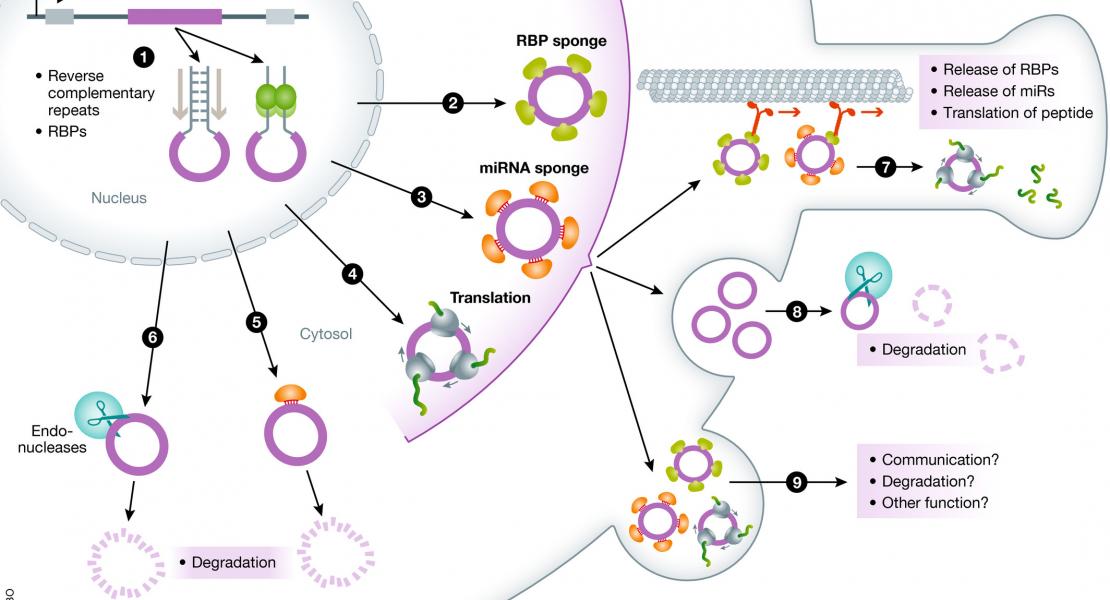Higher-Order Organization Principles of Pre-translational mRNPs

Abstract
Compared to noncoding RNAs (ncRNAs) such as rRNAs and ribozymes, for which high resolution structures abound, little is known about the tertiary structures of mRNAs. In eukaryotic cells, newly made mRNAs are packaged with proteins in highly compacted mRNPs, but the manner of this mRNA compaction is unknown. Here we developed and implemented RIPPLiT (RNA ImmunoPrecipitation and Proximity Ligation in Tandem), a transcriptome-wide method for probing the 3D conformations of RNAs stably-associated with defined proteins, in this case exon junction complex (EJC) core factors. EJCs multimerize with other mRNP components to form megadalton sized complexes that protect large swaths of newly synthesized mRNAs from endonuclease digestion. Unlike ncRNAs, mRNAs behave more like flexible polymers without strong locus-specific interactions. Polymer analysis of proximity ligation data for hundreds of mRNA species demonstrates that pre-translational mammalian mRNPs fold as linear rod-like structures with no strong propensity for 5' and 3' end interaction.
